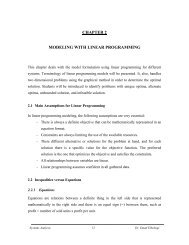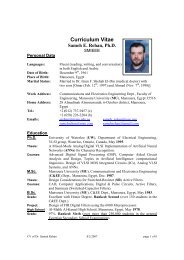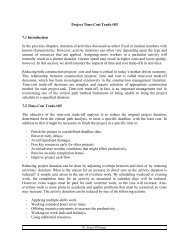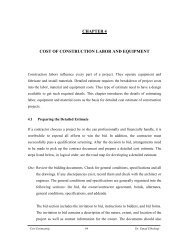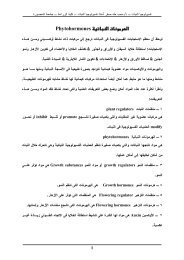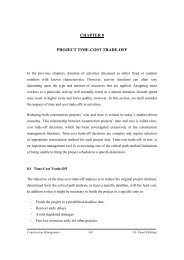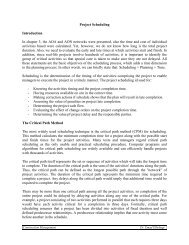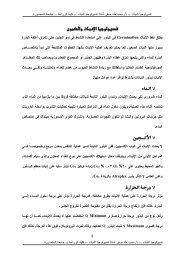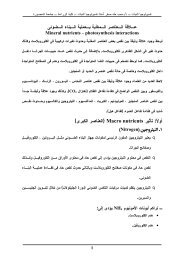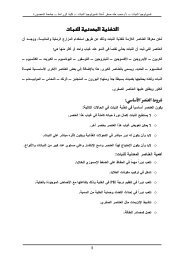Thyroid and Parathyroid
Thyroid and Parathyroid
Thyroid and Parathyroid
You also want an ePaper? Increase the reach of your titles
YUMPU automatically turns print PDFs into web optimized ePapers that Google loves.
patient. The following year, Edward Fox demonstrated that oral therapy in the form of<br />
“half a sheep's thyroid, lightly fried <strong>and</strong> taken with currant jelly once a week” was<br />
. equally effective<br />
Few of Billroth's patients developed myxedema, but William Halsted suggested that<br />
this was because of a difference in operative technique. Kocher was extremely neat<br />
<strong>and</strong> precise, operating slowly in a bloodless field. He removed all the thyroid, <strong>and</strong> his<br />
patients developed myxedema but rarely suffered laryngeal nerve damage or<br />
postoperative tetany. Billroth, however, worked rapidly <strong>and</strong> with less concern for<br />
hemorrhage. He often removed the parathyroid gl<strong>and</strong>s but left more thyroid tissue <strong>and</strong><br />
therefore encountered postoperative hypoparathyroidism but rarely myxedema. In<br />
1909 Kocher received the Nobel Prize for medicine in recognition “for his works on<br />
” . the physiology, pathology, <strong>and</strong> surgery of the thyroid gl<strong>and</strong><br />
EMBRYOLOGY<br />
A clear underst<strong>and</strong>ing of the developmental embryology <strong>and</strong> anatomy of the thyroid<br />
gl<strong>and</strong> is essential for the clinician performing a thorough physical examination of the<br />
gl<strong>and</strong> <strong>and</strong> aids in evaluating diagnostic images. Knowledge of possible developmental<br />
anomalies <strong>and</strong> the thyroid gl<strong>and</strong>'s relationship to the parathyroid gl<strong>and</strong>s <strong>and</strong> other<br />
. neck structures is vital in performing safe <strong>and</strong> effective thyroid operations<br />
The thyroid gl<strong>and</strong> originates from the base of the tongue in the region of the foramen<br />
cecum. Embryologically, it is an offshoot of the primitive alimentary tract. The<br />
endoderm cells in the midline of the floor of the pharyngeal anlage thicken <strong>and</strong> form a<br />
median thyroid anlage, which migrates caudally into the neck (Fig. 36-2). The anlage<br />
descends along a tract that runs anterior to the structures that form the hyoid bone <strong>and</strong><br />
the larynx; it is composed of epithelial cells that provide the follicular cells of the<br />
thyroid. As it descends, it is joined laterally by a pair of components originating from<br />
the ultimobranchial bodies of the fourth <strong>and</strong> fifth branchial pouches. These lateral<br />
components supply the C cells of the thyroid, which secrete calcitonin. When the C<br />
cells become neoplastic, the result is medullary carcinoma of the thyroid. An<br />
underst<strong>and</strong>ing of this anatomy explains why medullary carcinoma usually is located<br />
in the upper poles of the thyroid <strong>and</strong> virtually never in the isthmus or pyramidal lobe.<br />
The thyroid gl<strong>and</strong> forms follicles by the end of the tenth week of gestation <strong>and</strong><br />
. concentrates iodine <strong>and</strong> produces colloid by the end of the twelfth week<br />
ANOMALIES<br />
Rarely, the thyroid gl<strong>and</strong>, whole or in part, descends more caudally. This results in<br />
thyroid tissue located in the superior mediastinum behind the sternum, adjacent to the<br />
aortic arch or between the aorta <strong>and</strong> the pulmonary trunk, within the upper portion of<br />
the pericardium, or in the interventricular septum. The following types of anomaly<br />
. can be encountered<br />
Pyramidal Lobe<br />
The migratory tract of the developing thyroid gl<strong>and</strong> is known as the thyroglossal tract<br />
or duct. Normally the duct atrophies, although it may remain as a fibrous b<strong>and</strong>. In<br />
about 80 percent of people, the distal end that connects to the thyroid persists as a<br />
pyramidal lobe projecting up from the isthmus, lying just to the left of the midline<br />
(Fig. 36-3). In the normal individual the pyramidal lobe is not palpable, but in<br />
disorders resulting in thyroid hypertrophy (e.g., Graves' disease, diffuse nodular



